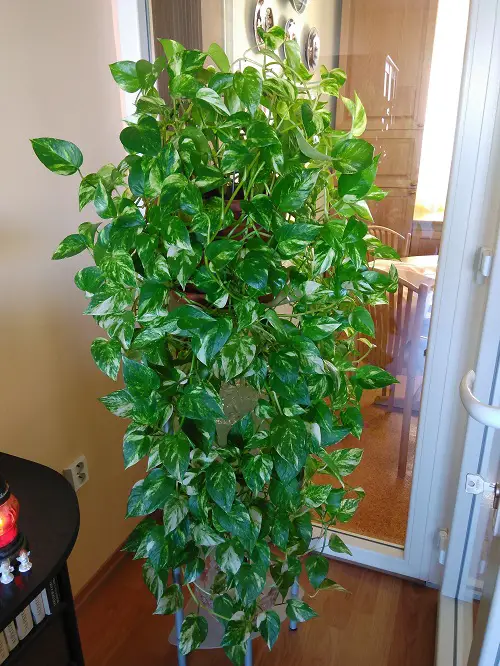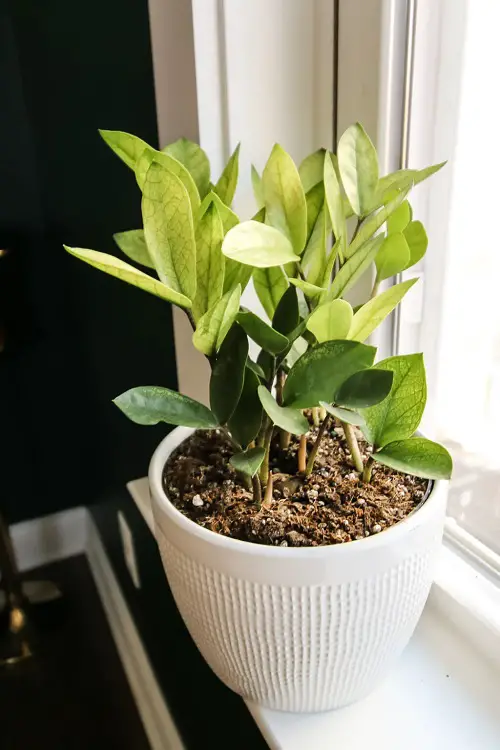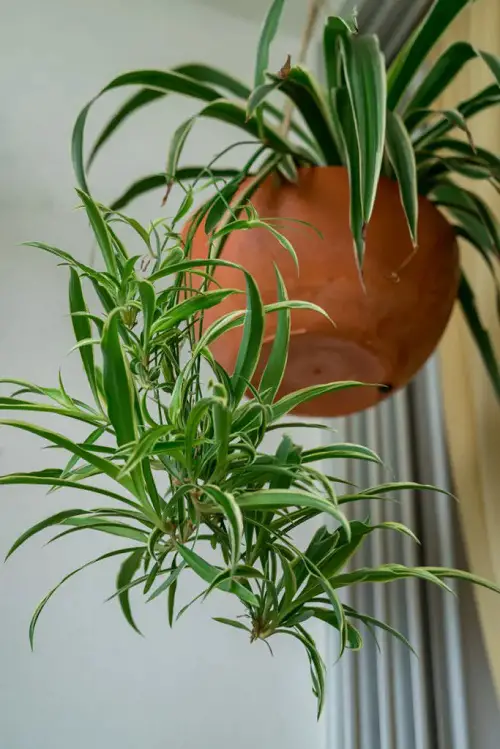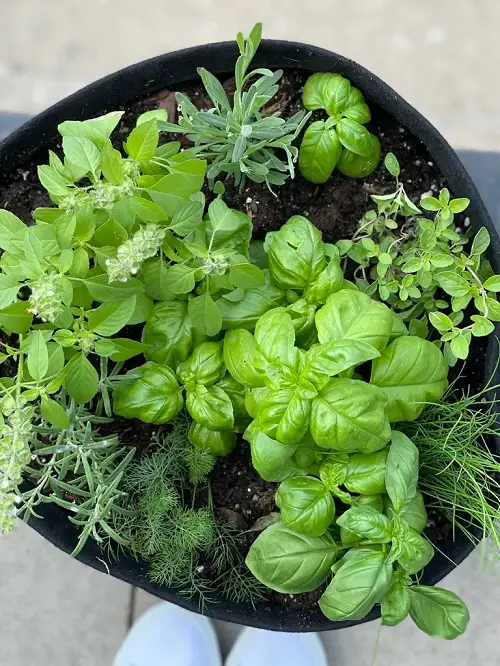Here are the must-have Houseplants You Should Prune and Regrow in the Same Pot for their lush and bushier appearance!
Pruning keeps the plant looking handsome and neat and gives you an opportunity to propagate new plants from those trimmings! Incorporating them in the parent plant’s pot is a clever way to improve the fullness of the specimen, making it look bushier – helping you maximize the plant’s impact in a limited space!
1. Pothos

With its cascading vines, pothos is a stunning addition to high shelves or hanging baskets. While trimming, remove 5-6 inches stems from the main plant and then plant them in the same pot. In a few weeks, you will have more new pothos plants growing in the same pot.
5 Tricks to Increase Coloration and Variegation in Pothos Plant
2. Spider Plant
Its arching leaves and baby plantlets bring a lively touch to any space. It’s ideal for hanging baskets in well-lit corners or on tall plant stands, where its offshoots can gracefully hang down.
Do note that this plant doesn’t grow from the ‘pruning‘ as you will have to propagate it using the spiderettes it grows.
How to Grow Spider Plants Faster
3. Philodendron

They are versatile and look striking on a small table, in a corner of your living room, or on a plant stand where their vines can gently spill over the edges and planting the pruned cuttings is a neat way to make this plant appear bushier.
9 Ways to Make Philodendrons Bushier and Bigger
4. Snake Plant
Growing Snake Plant is a little different because it’s a slow grower. Cut a healthy leaf and plant it upright in the soil. You must keep a little patience as these plants take their own sweet time to grow.
19 Beautiful Snake Plants in Jar Ideas
5. ZZ Plant

Zz plant is super easy to grow, you can get a bushier specimen in some time by planting its pruned stems with the mother plant but make sure you let cut ends heal before inserting them in the pot.
5 Most Beautiful Variegated ZZ Plants
6. English Ivy
With its delicate, trailing vines, English Ivy lends a classic look. If you want to make it bushier to create a green curtain effect, plant its trimmings in the same pot.
7. Wandering Dude

For that lush and fuller look, it would be a good idea to take a cutting every one or two months and plant it in the same container – you will have a thick specimen in no time!
Learn How to Make Wandering Dude Bushy and Bigger
8. Sedum

From ground-hugging mats to hanging clusters, this versatile succulent can be grown in various ways and stands out well with its many varieties.
19 Most Popular Sedums You Can Grow as Houseplants
9. Herbs
Basil, mint, and rosemary are great options to make a pot appear bushy and full by planting the cuttings. These herbs are really easy to maintain as long as you give them plenty of sun.
While you take the cuttings for the kitchen, do not forget to take 1-2 extra sprigs and then plant them in the same pot!
Pro Tip: You can also grow these all together in a wide container!
Best herbs to grow from cuttings
10. String of Pearls

Aptly named, the pearl-like leaves of this plant are a head-turner! If you want the best show of its dense looks, keep planting the wire like cuttings in the same pot!
Learn How to Grow String of Pearls From Cuttings
11. String of Bananas
There’s a reason why this succulent has a fruity name! Well, look at its leaves; you’ll know they resemble a banana so much!
How to Grow String of Bananas Succulent
How to Grow These Plants from Cuttings?
- Philodendrons, Pothos, Jade Plants, String of Pearls, String of Bananas, English Ivy, ZZ Plants, and herbs – you can grow these plants using stem cuttings. Choose a healthy stem with at least four leaves and cut just below a node. Remove the lower foliage and plant in the same pot as the parent plant – make sure the growing medium is well-draining.
- However, when planting the pruned cuttings of succulents, let their cut ends callus first.
- Spider Plant produces baby plants or ‘pups’ that dangle from the mother plant. You can cut and plant them in the same parent pot from where you have taken them from. The root quickly!
The Bottom Line
Do ensure that you cannot use this technique in a small pot (The ones that are just one size bigger than the root ball of the plant) as, in that case, the new cuttings in the pot can potentially stuff the container in no time – resulting in suffocating roots and overcrowding, which can further lead to issues like reduced air circulation and competition for nutrients.
If you have planned to root cuttings in the parent pot, go for a pot that’s at least two sizes bigger than the old one.







